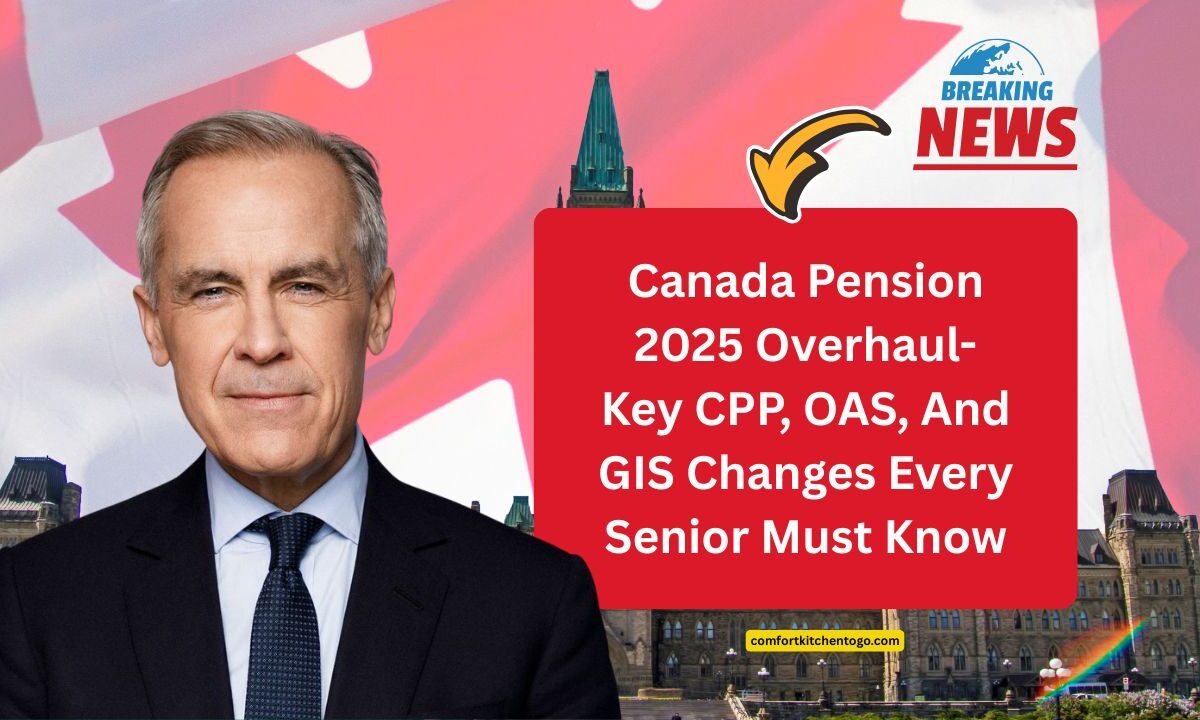Starting in 2025, the Canadian government will implement critical reforms to its retirement system, affecting Canada Pension Plan (CPP), Old Age Security (OAS), and Guaranteed Income Supplement (GIS).
These changes are designed to help retirees combat rising living costs, close gaps for low-income seniors, and future-proof the system.
Let’s break down the key updates for each benefit program.
Canada Pension Plan (CPP): Increased Contributions and Higher Payouts
Contribution Rate Changes
To support stronger future benefits, contribution rates under Phase 2 of the CPP Enhancement are increasing in 2025.
| Year | Employee Rate | Employer Rate | Self-Employed Total |
|---|---|---|---|
| 2024 | 5.95% | 5.95% | 11.90% |
| 2025 | 6.15% | 6.15% | 12.30% |
These rates apply to earnings between the basic exemption ($3,500) and the new 2025 maximum pensionable earnings of $68,500 (up from $66,600 in 2024).
Higher Maximum Monthly CPP Benefit
In 2025, the maximum monthly CPP retirement benefit rises to $1,395.20, up from $1,364.60 in 2024. This is a direct result of increased contributions and rising earnings ceilings.
Old Age Security (OAS): Bigger Cheques, Broader Access
OAS Monthly Payment Increase
OAS payments are indexed to inflation and see another bump in 2025, particularly benefiting seniors aged 75 and over.
| Age Group | 2024 Monthly OAS | 2025 Monthly OAS |
|---|---|---|
| 65–74 | $713.34 | $745.12 |
| 75+ | $784.67 | $819.34 |
These increases reflect continued high inflation across Canada, especially in food and housing.
Expanded Automatic Enrollment
Beginning mid-2025, more seniors turning 65 will be automatically enrolled into OAS, especially if they already receive CPP. This reduces administrative burdens and the risk of missed payments.
Guaranteed Income Supplement (GIS): Stronger Support for Low-Income Seniors
Higher GIS Payments and Thresholds
The GIS program, which supplements the income of low-income OAS recipients, is increasing its thresholds and payouts in 2025.
| Status | 2024 Max GIS | 2025 Max GIS |
|---|---|---|
| Single | $1,065.47 | $1,114.20 |
| Couple (each) | $641.35 | $678.75 |
In addition, a slower clawback rate is introduced, meaning GIS will reduce more gradually as a senior’s income increases.
What Retirees Should Do Now
| Step | Why It’s Important |
|---|---|
| Check your My Service Canada Account | Review your estimated CPP, OAS, and GIS benefits |
| Update your banking and tax details | Ensure timely and accurate benefit deposits |
| Apply for GIS if income qualifies | Many eligible seniors miss out on this non-taxable benefit |
| Track inflation trends | OAS and GIS adjust quarterly; know when rates may rise |
The 2025 pension overhaul in Canada marks a significant step forward in protecting and enhancing retirement income.
With higher CPP and OAS benefits, expanded automatic enrollment, and stronger support through GIS, seniors will experience more stability and financial confidence.
Retirees and near-retirees are encouraged to review their eligibility, update records, and monitor benefit changes regularly.
These adjustments reflect a stronger commitment by the government to meet the evolving needs of Canadian seniors.
FAQs
Will I automatically receive higher OAS payments in 2025?
Yes, if you’re already enrolled, OAS payments will be adjusted automatically based on the Consumer Price Index.
Can I qualify for GIS if I have CPP and OAS?
Yes. GIS eligibility depends on your income, not whether you receive CPP or OAS. Many still qualify despite receiving both.
What’s the new maximum income for GIS eligibility?
Exact thresholds depend on marital status and OAS eligibility. In 2025, these thresholds have increased due to inflation indexing. Seniors with low income should review GIS eligibility again.

